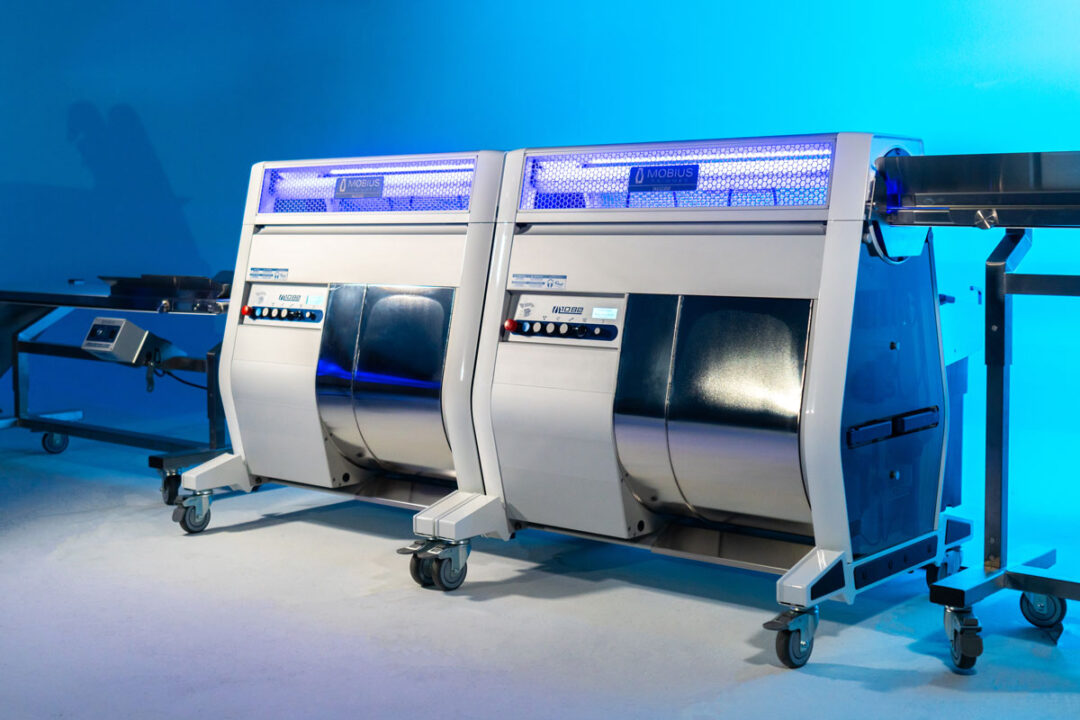Heuchera: To Seed, or Not to Seed

Growers must consider the pros and cons of using Heuchera seed versus tissue-culture to make the best decision for their production needs.
Heuchera has become a staple crop in many growers’ catalogs. With the availability of new varieties becoming easily accessible from tissue culture labs, more growers are opting to forego the seed germination chamber and shell out the extra money to purchase tissue culture. This article will discuss some considerations growers should make before planning next season’s production schedules.
Tissue Culture Offers Consistency and Fast Turnarounds
While there are many varieties of Heuchera available from seed, market demand has shifted to favor the seemingly endless colorful options available in lab-grown tissue culture (TC). These variety selections have transformed modern Heuchera into a highly sought-after foliage plant that is at home in almost any landscape, patio pot, or basket arrangement.
Heuchera purchased from a tissue culture supplier is typically priced between 44 cents per plant and up to 60 cents per plant on the higher end. Growers can expect consistency from tissue culture suppliers and find added comfort in knowing that the supplier will often take responsibility for transportation issues and unexpected losses in propagation. Suppliers will also occasionally pad orders with overpack, which can accommodate for small losses or yield bonus profits for growers if crops perform well.
A typical lead time for a TC-grown Heuchera is eight weeks, which means a short time on the bench and a fast turnaround. Propagation practices are consistent with most other tissue culture: limit light and excess free moisture, aim for 70⁰F to 75⁰F, and the plants will take root. Many growers construct PVC tent frames on benches and cover them with Reemay cloth to provide an ideal microenvironment. Most varieties will finish on time and rarely require backordering. Patching and grading of plants within trays is often necessary, and if orders are grown speculatively, cut back may be required to control crop height.
Most Heuchera will respond well to plant growth regulator (PGR) applications; however, certain varieties will grow more vigorously than others and may require higher rates to achieve overall control of plant height. Generally, 2 ppm to 10 ppm uniconazole as a spray is all that’s required. Once sufficiently bulked, plants can be held in cooler temperatures to minimize maintenance requirements.
Seed Costs Less
The prices of Heuchera seeds range roughly between $7 to $10 for a 2,500-count package of popular varieties. And while the price of seed may entice some growers, there are some factors that should be considered before purchasing seeds by the thousands.
With a typical lead time of 12 weeks, a Heuchera grown from seed will spend more time on the bench than its tissue-culture counterpart. This lead time is sometimes increased as batches are back-ordered to bulk plants in accordance with common standards. Heuchera seeds are tiny, which makes it difficult to sow a uniform number of plants per cell in trays. Heavy seeding leads to overcrowding later in the crop cycle, which can negatively impact water management and airflow into the dense canopy. Germination rates are relatively high, but these tiny seedlings will require growers to water more stringently to avoid over- or under-watering. In addition, an application of Fascination (gibberellins and benzyladenine, Valent USA) as a spray at 2ppm to 5 ppm may be necessary to promote plant growth.
In trays grown from seed, patching and grading of plants within trays will still be necessary. However, unlike tissue culture, any losses incurred will not be compensated by the seed supplier; they are solely the responsibility of the grower. Once plants are adequately bulked, they will respond well to PGRs, with 2 ppm to 5 ppm applications of Uniconazole being sufficient. Crops can also be held in cooler temperatures to reduce maintenance and PGR requirements.
Increasing demand for tissue-culture grown Heuchera varieties is creating an increased opportunity for growers to profit. With an understanding of both tissue culture and seed production practices, and the pros and cons of each, growers can choose a program that will benefit their customers and be profitable to their businesses.









